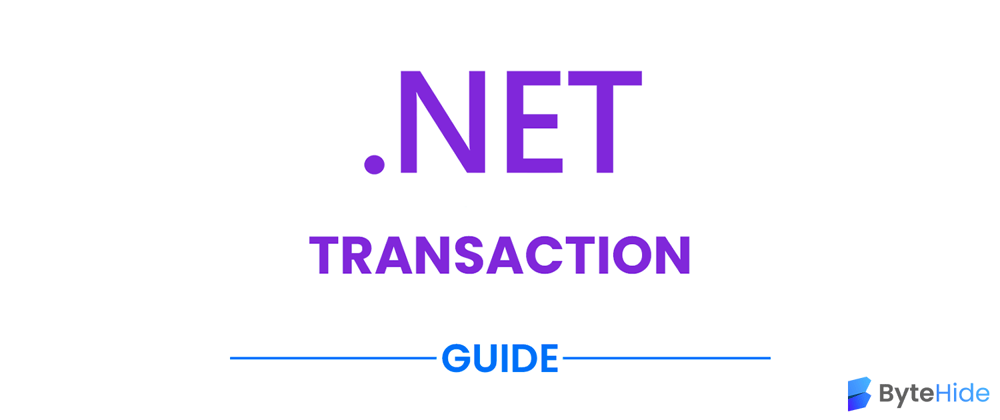What is a Transaction in .NET?
A transaction is a sequence of operations performed as a single logical unit of work. Transactions are used to ensure the consistency and integrity of data in database systems.
They follow the ACID properties: Atomicity, Consistency, Isolation, and Durability. In the context of .NET, transactions can be managed through various classes and interfaces provided by the .NET Framework.
Importance of Transactions in Database Management
Transactions are crucial for maintaining data integrity and consistency in database systems.
They ensure that multiple operations occur atomically, either all succeeding or all failing, preventing partial updates that could leave the database in an inconsistent state.
Transactions also help to isolate concurrent operations, ensuring that each transaction’s changes are isolated from others until they’re committed.
Types of Transactions in .NET
Local Transactions
Local transactions are transactions that involve a single resource, such as a single database or a single message queue.
They are simpler and faster compared to distributed transactions, as they involve only one resource manager. In .NET, local transactions can be implemented using the TransactionScope class or the SqlTransaction class.
Distributed Transactions
Distributed transactions involve multiple resources, such as multiple databases or a combination of databases and message queues.
They are more complex and slower than local transactions, as they require coordination between multiple resource managers. In .NET, distributed transactions can be implemented using the TransactionScope class in conjunction with the System.Transactions namespace.
Working with Transactions in .NET
TransactionScope Class
Creating a TransactionScope
The TransactionScope class, available in the System.Transactions namespace, allows you to define a block of code that participates in a transaction.
To create a new transaction scope, you simply create a new instance of the TransactionScope class, like so:
using (TransactionScope scope = new TransactionScope())
{
// Perform transactional operations here
}
Committing and Rolling Back Transactions
By default, a transaction will be committed when the TransactionScope is disposed. To commit the transaction, you can call the Complete method:
using (TransactionScope scope = new TransactionScope())
{
// Perform transactional operations here
scope.Complete();
}
If an exception occurs within the TransactionScope, the transaction will be rolled back automatically:
using (TransactionScope scope = new TransactionScope())
{
try
{
// Perform transactional operations here
scope.Complete();
}
catch (Exception ex)
{
// Handle the exception and let the transaction roll back
}
}
SqlTransaction Class
Establishing a Connection
The SqlTransaction class, available in the System.Data.SqlClient namespace, allows you to manage transactions directly on a SQL Server database.
To use SqlTransaction, you first need to establish a connection to the database using the SqlConnection class:
using (SqlConnection connection = new SqlConnection(connectionString))
{
connection.Open();
// Perform transactional operations here
}
Implementing SqlTransaction
Once you have an open connection, you can create a new instance of the SqlTransaction class by calling the BeginTransaction method on the SqlConnection object
using (SqlConnection connection = new SqlConnection(connectionString))
{
connection.Open();
using (SqlTransaction transaction = connection.BeginTransaction())
{
try
{
// Perform transactional operations here
transaction.Commit();
}
catch (Exception ex)
{
// Handle the exception and roll back the transaction
transaction.Rollback();
}
}
}
Isolation Levels in .NET Transactions
Read Uncommitted
This isolation level allows transactions to read uncommitted changes made by other transactions.
It is the lowest level of isolation and can lead to issues such as dirty reads, non-repeatable reads, and phantom reads.
Read Committed
Ensures that a transaction can only read committed changes made by other transactions.
It prevents dirty reads but can still result in non-repeatable reads and phantom reads.
Repeatable Read
Repeatable read level prevents dirty reads and non-repeatable reads by locking the data being read by a transaction.
However, it can still result in phantom reads.
Serializable
This is the highest level of isolation, which prevents dirty reads, non-repeatable reads, and phantom reads by locking the entire range of data being accessed by a transaction.
This level of isolation can lead to reduced concurrency and potential deadlocks.
Snapshot
This isolation level provides a snapshot of the data at the start of a transaction, allowing for consistent reads without acquiring locks.
It prevents dirty reads, non-repeatable reads, and phantom reads, while still allowing for high concurrency.
Best Practices for Implementing Transactions in .NET
- Choose the appropriate transaction type: Use local transactions when working with a single resource and distributed transactions for multiple resources.
- Use the correct isolation level: Select the isolation level that provides the necessary consistency guarantees without sacrificing performance.
- Keep transactions short: Minimize the duration of transactions to reduce the potential for contention and deadlocks.
- Handle exceptions properly: Ensure that transactions are rolled back in the case of an error or exception.
- Close connections and dispose of resources: Always close database connections and dispose of transaction objects to prevent resource leaks.
Conclusion
Transactions are an essential part of maintaining data integrity and consistency in database systems. In .NET, you can work with transactions using classes such as TransactionScope and SqlTransaction.
By understanding the different types of transactions, isolation levels, and best practices, you can implement robust and efficient transactions in your .NET applications.



















